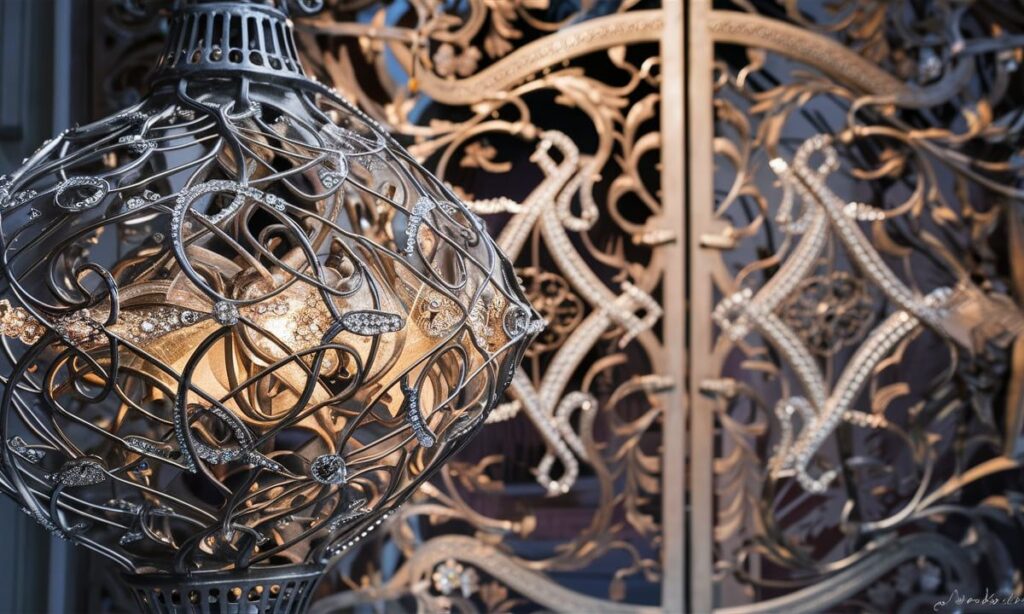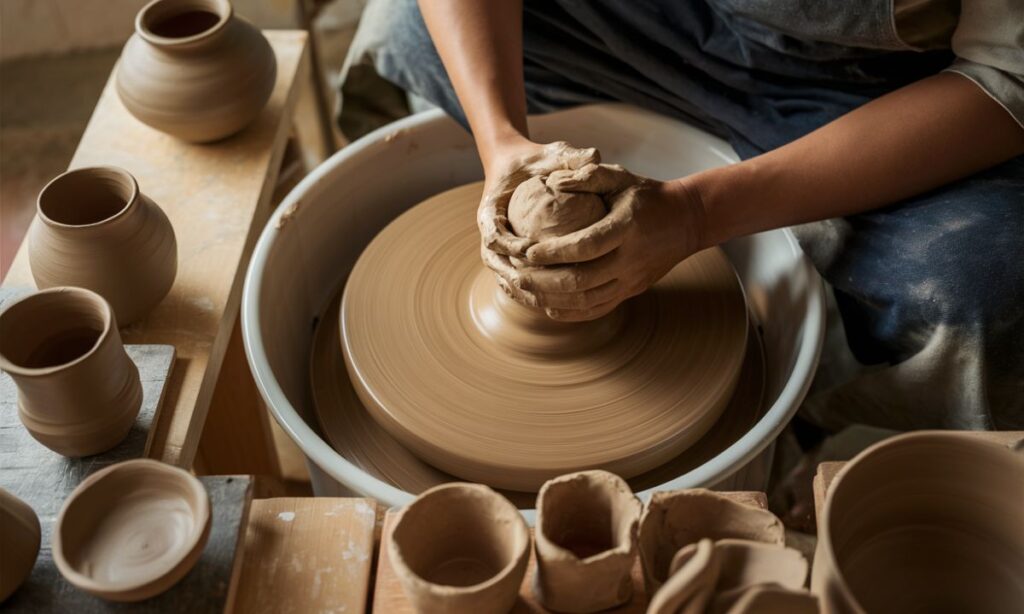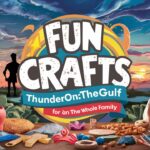The Gulf region crafts represent a vivid tapestry of artistic expression spanning millennia of cultural development. Arts Thunderonthegulf crafts encompass a diverse range of traditional artforms that have defined the identity of coastal communities throughout the region. From the intricate detailing of metalwork and filigree to the vibrant patterns of traditional textiles, these crafts tell the story of a region where art and function have always been interwoven. This rich cultural heritage continues to evolve, blending ancient techniques with contemporary innovations, ensuring these traditions remain relevant in modern society.
The Historical Foundation of Arts Thunderonthegulf Crafts
The origins of Arts Thunderonthegulf crafts date back centuries, deeply rooted in the maritime culture and trade routes that connected the Gulf with distant lands. Historical craftsmanship in this region developed through necessity initially, as artisans created practical items for daily use—fishing implements, storage containers, and shelter necessities. Over time, these functional creations evolved to incorporate aesthetic elements that reflected regional identity and social status.
The pearl diving influence cannot be overstated in the development of Gulf craftsmanship. For generations, pearl diving served as the economic backbone of many coastal communities, inspiring artistic motifs and providing materials for adornment. This seafaring tradition influenced everything from jewelry design to architectural elements, with nautical themes appearing consistently throughout the artistic landscape of the region.
Trade with neighboring civilizations further enriched the artistic vocabulary of Gulf artisans. Influences from Persia, India, East Africa, and beyond can be detected in the patterns, techniques, and materials employed in traditional Gulf crafts. This cross-cultural exchange resulted in a distinctive artistic identity that balances indigenous traditions with borrowed elements, creating a unique aesthetic that is instantly recognizable as belonging to the Gulf region.
Traditional Craft Techniques in Arts Thunderonthegulf Crafts
The mastery of traditional craft techniques forms the backbone of Arts Thunderonthegulf crafts. These methods, refined over generations, represent more than mere production processes—they embody the transmission of knowledge between artisans and serve as living links to ancestral wisdom. Understanding these techniques provides insight into not only the artistic achievements of Gulf craftspeople but also their ingenuity in adapting to their physical environment.
Historically, craft knowledge was passed down through family lines or guild-like structures, with master artisans taking on apprentices to ensure continuity. This oral tradition of knowledge transfer ensured that techniques remained authentic while allowing for subtle innovations that kept the crafts relevant to changing societal needs. Today, many cultural institutions and governmental initiatives work to document and preserve these techniques, recognizing their cultural significance beyond the objects they produce.
Metalwork and Filigree: The Art of Intricacy
The tradition of metalwork and filigree represents one of the most sophisticated artistic expressions within Arts Thunderonthegulf crafts. Artisans work primarily with silver, gold, and copper, transforming these metals into intricate jewelry, decorative objects, and ceremonial items. The hallmark of Gulf metalwork lies in its extraordinary attention to detail, with patterns often depicting geometric designs, floral motifs, and celestial symbols.

Filigree work—involving the twisting and soldering of fine metal wires into delicate patterns—showcases the pinnacle of technical sophistication in Gulf metalwork. These pieces often feature openwork designs that play with light and shadow, creating visual effects that seem to transcend the material limitations of the medium. Traditionally, these items carried protective significance beyond their decorative function, with certain motifs believed to ward off evil or bring good fortune to the wearer.
The tools used in traditional metalwork remain largely unchanged for centuries, with artisans still employing small hammers, specialized pliers, and fine-tipped implements to achieve their delicate results. Even as modern technology enters the workshop, many master craftspeople maintain that the human touch cannot be replicated, preserving these traditional methods alongside newer innovations.
Weaving and Textile Arts: The Fabric of Tradition
The art of traditional weaving holds a central place in the cultural identity of Gulf communities. Using looms that have changed little in design over the centuries, weavers create textiles for clothing, household items, and decorative purposes. Natural fibers—predominantly wool, cotton, and occasionally silk for luxury items—form the basis of these textiles, with patterns that often tell stories about regional identity and tribal affiliation.
Embroidery techniques further enhance these textiles, with distinct styles characterizing different regions within the Gulf. Women traditionally excelled in this art form, creating elaborate designs that adorned garments, particularly for ceremonial or festive occasions. The most valued pieces feature hand-stitching so fine and even that they appear almost machine-made to the untrained eye. Colors hold symbolic meaning in these works, with red often representing joy and celebration, blue symbolizing protection, and gold signifying prosperity.
The traditional dress of the region exemplifies the sophisticated textile traditions of Gulf communities. Women’s garments often feature intricate embroidery around the neckline, sleeves, and hem, while men’s clothing may incorporate woven borders or subtle embellishments that denote status. These textile traditions continue to influence contemporary fashion, with designers increasingly drawing inspiration from these time-honored techniques and aesthetic principles.
Pottery and Ceramics: Crafting with Earth
The tradition of Gulf pottery and ceramics represents one of the oldest continuous craft practices in the region. Archaeological evidence suggests pottery production dating back thousands of years, with distinctive regional styles emerging over time. Using locally sourced clay and natural pigments, potters created a wide range of vessels for cooking, storage, and water transportation, each designed with functionality as the primary consideration.
Traditional pottery techniques involve hand-building methods such as coiling and pinching, with wheel-thrown pottery becoming more common as technology spread throughout the region. Firing techniques varied according to available resources, with some communities using simple pit fires while others constructed more elaborate kilns. Decoration typically consisted of incised patterns, applied relief elements, or painted designs using mineral-based pigments that could withstand the firing process.

The forms of traditional Gulf pottery reflect the practical needs of desert and coastal dwelling communities. Water vessels feature porous surfaces that allowed for natural cooling through evaporation, while cooking vessels were designed to withstand direct heat. Storage containers often included elements to deter pests or preserve contents in the harsh climate conditions. These practical considerations led to a distinctive aesthetic that balances utility with beauty in a seamless integration.
Woodworking and Carving: The Craft of Stories
The tradition of woodworking and carving evolved in response to the limited timber resources available in the Gulf region. Artisans developed techniques to maximize the utility of available wood, primarily from date palms and occasionally imported hardwoods obtained through trade. Doors, furniture, storage chests, and architectural elements represent the primary applications of woodworking in traditional Gulf culture.
Carving techniques emphasize geometric patterns, with artisans using specialized tools to create relief designs that catch light and shadow. These patterns often contain symbolic meaning, with certain motifs believed to bring protection or good fortune to a household. The most elaborate examples of woodwork can be found in historic mosques and prestigious homes, where carved doors and screens demonstrate the highest levels of craftsmanship.
Joinery methods in traditional Gulf woodworking evolved to accommodate the challenging climate conditions of the region. Techniques that allowed for wood expansion and contraction in response to humidity changes ensured the longevity of wooden objects. These engineering solutions, developed through generations of practical experience, showcase the sophisticated understanding Gulf artisans possessed of their materials.
Arts Thunderonthegulf Crafts in the Modern Era
The landscape of Arts Thunderonthegulf crafts has transformed significantly in recent decades, with contemporary Gulf artisans reimagining traditional practices for modern contexts. While preserving the essential techniques and aesthetic principles that define these craft traditions, today’s makers incorporate new materials, technologies, and design influences that expand the possibilities of these ancient art forms.
Modern art fusion approaches have gained prominence, with artists combining elements from different craft traditions or integrating Gulf craft techniques with contemporary art practices. This cross-pollination has led to innovative expressions that honor tradition while speaking to current social and cultural realities. Exhibition spaces throughout the Gulf region increasingly showcase these hybrid works alongside traditional crafts, acknowledging the continuum of artistic evolution.
Educational initiatives have also transformed how craft knowledge is transmitted. Formal training programs in universities and dedicated craft schools now supplement the traditional apprenticeship model, making these skills accessible to those outside family lineages. This democratization of craft education ensures greater participation while introducing standardized teaching methods that help preserve techniques that might otherwise be lost.
Sustainable crafts represent another significant development in contemporary Gulf craft practice. Drawing on the inherently sustainable nature of traditional craft production, modern artisans emphasize environmentally conscious approaches that minimize waste and utilize renewable resources. This eco-friendly orientation connects contemporary craft practice with ancestral values of resource stewardship, providing a meaningful bridge between past and present.
The Future of Arts Thunderonthegulf Crafts
The future of Arts Thunderonthegulf crafts appears vibrant as new generations engage with these traditions through contemporary lenses. Digital technologies offer unprecedented opportunities for documentation, promotion, and innovation within traditional craft forms. Virtual platforms enable artisans to reach global audiences, while digital design tools allow for experimentation with traditional motifs and techniques without compromising authenticity.

Cultural tourism has emerged as another significant factor in the sustainability of Gulf craft traditions. Visitors increasingly seek authentic cultural experiences, creating markets for traditional crafts and opportunities for artisans to demonstrate their skills. This tourism interest has contributed to greater recognition of craft practitioners as cultural ambassadors, elevating their social status and encouraging younger generations to continue these traditions.
Government initiatives throughout the Gulf region have established craft preservation programs that provide financial support, exhibition opportunities, and international promotion for traditional artisans. These institutional efforts acknowledge the importance of craft traditions not only as cultural heritage but also as potential economic drivers. By supporting craft communities, these programs ensure the continued vitality of traditions that might otherwise struggle to compete in industrialized markets.
FAQs About Arts Thunderonthegulf Crafts
What makes Arts Thunderonthegulf crafts unique from other regional craft traditions?
Arts Thunderonthegulf crafts are distinguished by their maritime influences, adaptation to desert environments, and cross-cultural influences from trade routes that connected the region with Africa, Asia, and Europe.
How are traditional craft skills being preserved in the Gulf region today?
Traditional craft skills are preserved through formal education programs, apprenticeships, cultural centers, documentation projects, and government initiatives that provide economic support to practicing artisans.
What materials are commonly used in traditional Gulf crafts?
Common materials include locally sourced clay, palm fibers, wool, cotton, precious metals (particularly silver), copper, and limited wood resources, with each material adapted to the region’s climate conditions.
How have modern technologies influenced traditional Gulf craft practices?
Modern technologies have enabled precision in replicating traditional designs, expanded material possibilities, facilitated global marketing of craft products, and allowed for digital documentation of endangered techniques.
What role do women play in the tradition of Gulf crafts?
Women have historically been the primary practitioners of textile arts, particularly embroidery and weaving, while also contributing significantly to pottery making and certain forms of decorative arts, with their work often forming an essential component of family economies.
Conclusion
Arts Thunderonthegulf crafts represent a living heritage that continues to evolve while maintaining connections to ancient traditions. From the delicate precision of filigree work to the robust functionality of traditional woodworking, these crafts embody the cultural values, environmental adaptations, and artistic sensibilities of Gulf communities. They serve as tangible links to ancestral knowledge while providing creative expression for contemporary artisans seeking to honor their heritage.
As we look toward the future, the preservation and evolution of these craft traditions depend on finding balance between conservation and innovation. By documenting traditional techniques, supporting practicing artisans, and encouraging creative reinterpretations, cultural institutions and communities can ensure that Arts Thunderonthegulf crafts remain vibrant and relevant. These artistic traditions, born from necessity and refined through centuries of practice, continue to tell the story of a region where creativity and craftsmanship have always been valued as expressions of cultural identity.
FORE MORE DETALIES GRAMMARGURUS

I m John Nicker a Content Writer and SEO Expert with 5 years Experiness. I have Already work on BBC News Website.
















